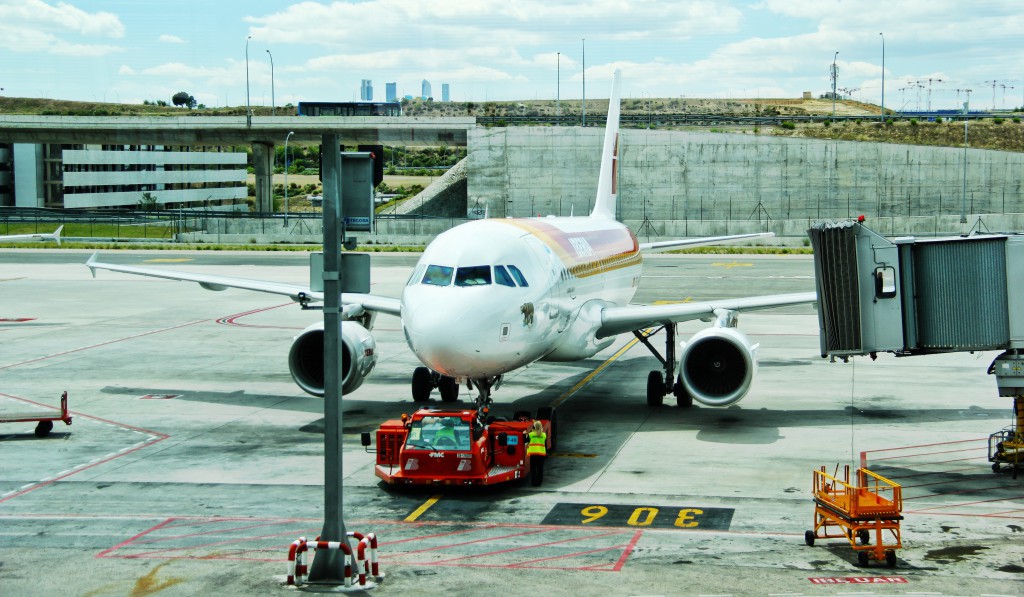Sometimes when we talk about technologies that can vastly improve real life experiences, especially ones that involve futuristic-feeling technology like biometrics, it helps to have real life examples. The promises of biometric border control, particularly in airports, seem almost too good to be true: convenience without the sacrifice of security.
The thing is, these promises are real and out there in the world right now. In fact, biometrics have been making border control easier and more secure for a long time. Here are three different biometric border control deployments that are at work while you read this very article.

Iris Recognition at Hamad International Airport in Doha, Qatar
Hamad International Airport, located in Qatar’s capital of Doha, employs iris recognition technology at its immigration counters, courtesy of Iris ID (formerly LG Iris).
The technology in question is Iris ID’s iCAM D1000, which was first debuted at the Biometric Consortium Conference in 2013 and is the subject of a 130 camera deployment in Hamad International. As an Iris-at-a-Distance technology that can capture biometrics in three to four seconds, the iCAM D1000 is an ideal solution for deployment in any location with high throughput, but Hamad International brings out a hidden strength.
An international airport poses a unique deployment scenario that showcases the universal language of biometric technology. Because an immigration counter has a high rate of incidences in which language barriers can bring processes to a halt, technologies that biometrically identify persons entering Qatar become especially useful.
In at the immigration counters in Doha’s airport, the iCAM is behind a mirror to facilitate convenience with minimal instructions.
“The idea is that we have a mirror, a simple user interface, I look at myself in the mirror and within a couple of seconds it takes a picture of the eyes and the face,” said Mohammed Murad, Iris ID’s vice president of sales, in an interview with FindBiometrics.
“You will see the adoption of this technology in those applications that require very limited instructions provided to the user because you want to process people quickly,” he continued. “People that have just gotten off of a 12-14 hour flight don’t want to spend any more than a couple of minutes at the immigration counter.”
As convenient as iris biometrics make the immigration counter experience in Doha, the technology also makes security accessible too. Installed at this international point of entry to Qatar, the biometric border control solution can quickly identify known individuals that the country would like to keep out.
Aruba Airport’s Happy Flow Initiative
Passengers at Aruba International Airport flying to and from the Netherlands have it easy thanks to a pre-clearance trial underway courtesy of Vision-Box. Because the Aruba government is committed to the ideal of implementing new technologies that improve traveller experience at the island’s airport, it is hosting a permanent pilot of Happy Flow: a fully biometric passenger security process.
According to Jean-François Lennon, Vision-Box’s director of global business development in sales and marketing, Happy FLow marks the first time that biometrics are being used as the main passenger identification token in an airport.
“Instead of using either a passport or a boarding pass,” noted Lennon in a press release published earlier this year, “the passenger swiftly goes through all airport control points where he simply has to have his identity checked by looking at facial recognition cameras.”
The emphasis with Happy Flow is on preventative measures rather than reactive security, explained Lennon. “The relevance of the pre-clearance initiative is world-ranging. It means these countries are building a broad-based platform for further cooperation and intelligence exchange, which will be a case study of world relevance for more cooperative, efficient and reliable border management around the world.”
Vancouver’s Continuing Commitment To Convenience and Security
In Vancouver, British Columbia, the automated border control experience has been becoming more inclusive. What used to be an airport security convenience available only to Canadian and US passport holders has recently been expanded to all travelers Electronic System for Travel Authorization approval.
Only two countries used to be able to take advantage of the biometric passport kiosks in Vancouver International Airport, but this past May the BorderXpress terminals were upgraded with the latest biometric tech from Crossmatch (going by Cross Match Technologies at the time) to accommodate a staggering 38 nations including Australia, Japan, Germany and the United Kingdom.
Craig Richmond, president and CEO of Vancouver Airport Authority commented on the upgrade at the time, saying: “Our goal is, and has always been, to lead the transformation of the travel experience. By expanding our Automated Passport Control capabilities to include travelers from visa-waiver countries, we are continuing to help airports modernize for improved efficiency and customer satisfaction.”
*
These are only three instances of automated border control as enabled by biometrics. Be sure to share other examples with us on Twitter using the hashtag #FBBorders to have your favorites included in our monthly roundup.
—
November 19, 2014 – by Peter B. Counter


Follow Us